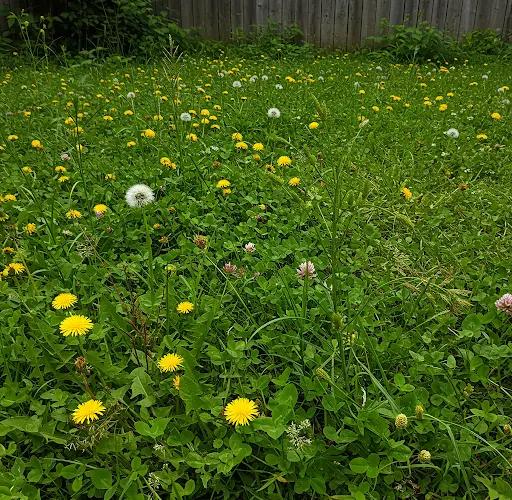Create Your Own Powerful Weed Tea Fertilizer for a Thriving Garden
Imagine making a fertilizer so concentrated that just a small amount can transform your garden. This homemade liquid fertilizer, known as “weed tea,” is an incredible nutrient boost for your plants. By the time you’re done, you’ll have a dark, rich concentrate packed with the essential nutrients your plants need. The best part? It’s made from the unwanted weeds in your garden—turning a nuisance into a powerful, eco-friendly resource.
Here’s how to make this concentrated weed tea fertilizer to supercharge your garden.
What You’ll Need:
-
A variety of weeds from your garden
-
A 5-gallon bucket
-
A heavy object (brick or large stone)
-
A lid for the bucket (not tightly sealed)
-
A jar or bottle for storing the concentrate
Step 1: Gather and Prepare the Weeds
Start by collecting a variety of weeds from your garden. The more types of weeds you gather, the richer your mixture will be, as different plants contribute different nutrients. Don’t worry about which weeds they are—just make sure they haven’t been treated with pesticides or chemicals. These weeds can include grasses, dandelions, clover, nettles, and other common garden weeds. The greater the variety, the more diverse the nutrients in your final product.
Once you’ve gathered your weeds, chop them into smaller pieces. The smaller the pieces, the faster they will break down and release nutrients. A sharp knife or garden shears will make this job easier.
Step 2: Fill the Bucket
Place the chopped weeds into a 5-gallon bucket, filling it up as much as possible. Make sure the weeds are packed tightly in the bucket. The tighter the packing, the more pressure there will be on the weeds, which speeds up the decomposition process.
Once the weeds are packed in, place a heavy object such as a brick or large stone on top of the weeds. This weight will help press them down, keeping them submerged as they decompose. Keeping the weeds submerged is important, as it encourages anaerobic decomposition, which produces the nutrient-rich liquid we’re after.
Step 3: Cover and Wait
Now, cover the bucket with a lid. It’s important that the lid is not tightly sealed; it should be loose enough to allow gases to escape as the weeds decompose. If the lid is sealed too tightly, it could create a build-up of gas inside the bucket, which may hinder the decomposition process.
Place the bucket in a shady spot, away from direct sunlight. Leave it undisturbed for about four weeks. During this time, the weeds will break down, and a small amount of liquid will begin to form at the bottom of the bucket. As the weeks pass, you’ll notice that the mixture becomes darker and thicker, signifying that the decomposition process is working.
Step 4: Extract the Weed Tea
After about four weeks, check the bucket. The weeds should have decomposed significantly, and you’ll notice a dark, thick liquid at the bottom of the bucket. This liquid is your concentrated weed tea—powerful and packed with nutrients.
Carefully extract the liquid into a jar or bottle, leaving behind the decomposed weeds. This concentrate is incredibly potent, so you’ll only need a small amount to make a big difference in your garden.
Step 5: Dilute and Apply
To use the concentrated weed tea, you’ll need to dilute it with water. Mix one small cup of the concentrated liquid with 5 liters (about 1.3 gallons) of clean water. Stir the mixture well to ensure the solution is even.
Now, your nutrient-rich weed tea is ready to use. It’s best to apply this mixture around the base of your plants using a watering can. Avoid pouring it directly on the leaves, as watering the roots allows the plants to absorb the nutrients more effectively.
Apply this fertilizer every two to three weeks, especially when your plants are flowering or starting to produce fruit. You’ll begin to see the benefits as your plants respond to the nutrient boost.
Why Weed Tea Works
The benefits of using concentrated weed tea are numerous. First, it’s an excellent way to recycle weeds that would otherwise be discarded. Instead of throwing away these plants, you’re repurposing them into a valuable fertilizer, making it both environmentally friendly and cost-effective.
Second, weed tea is packed with essential nutrients. As the weeds break down, they release nitrogen, phosphorus, and potassium—all key nutrients for plant growth. These nutrients help your plants develop stronger roots, lush foliage, and better resistance to pests and diseases.
Another great benefit is the microbial life that develops during the decomposition process. The liquid is teeming with beneficial microbes that help improve soil health. When you water your plants with weed tea, you’re not just feeding them nutrients; you’re also introducing these microbes into the soil, enhancing its structure and fertility.
Lastly, using this homemade fertilizer means you can avoid synthetic chemicals. Commercial fertilizers often contain harmful chemicals that can harm beneficial insects, pollute water sources, and disrupt the natural balance in your garden. Weed tea provides your plants with a natural, organic boost without these negative side effects.
Conclusion
Creating your own concentrated weed tea fertilizer is a simple, sustainable way to give your garden the nutrients it needs to thrive. It’s a cost-free, eco-friendly solution that turns a common garden nuisance into a powerful resource for plant growth. By recycling weeds, you’re not only saving money but also reducing your environmental footprint. So, the next time you pull weeds from your garden, don’t throw them away—turn them into a powerful, nutrient-packed fertilizer that will help your plants grow strong and healthy.



